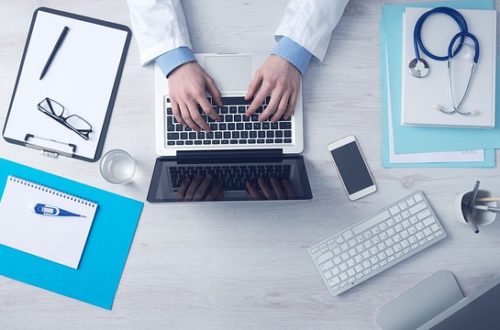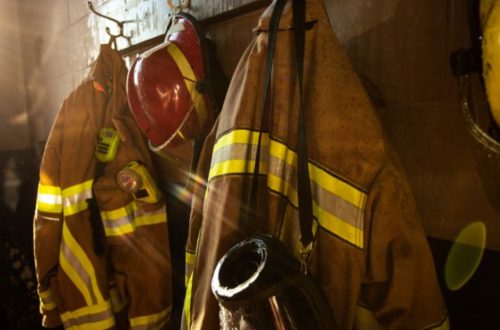The Future of Health: Where Technology and Biology Intersect

The invention of advanced medicine is a relatively new concept in human history. Technology has only accelerated the pace at which medicine has evolved, and we’re on the brink of an exciting new dawn as a species. This is the future of health and healthcare, the very intersection where technology and biology collide.
Here are a couple of the technologies that exist on the forefront of innovation. While they obviously exist in and benefit other facets of society, they represent the future of how we can keep ourselves and each other happy and healthy.
3D Printers
It’s been awhile since there’s been any big hype around 3D printing, but the healthcare industry and sciences have seen awesome potential in their use.
The GoHealth U.C. blog, for example, illustrates 3D printing’s role in replacing the traditional plaster cast. “A Spanish startup has developed a printer that can scan your broken limb and print a cast in seconds—lightweight, waterproof, and tailored to you. This has incredible promise for urgent care facilities, who spend a great deal of time applying casts to broken bones.”
Other specialty solutions have been developed using 3D print technology, including the printing of functional organs as well as unique, cost-effective healthcare tools.
“For example, experts have developed 3D-printed skin for burn victims and airway splints for babies with tracheobronchomalacia, which makes the tiny airways around the lungs prone to collapsing,” writes Drew Hendricks with HBR. “The airway splints are especially significant since they are the first 3D implant made for kids and they’re designed to grow with the patient … The splints can be produced in a matter of hours, and they only cost about $10 per unit.”
The Internet of Things (The IoT)
The IoT has had a huge affect on the world around us already, outside of medicine. Wearables and health trackers are all the rage, with the Apple Watch and Samsung devices revolutionizing how people view their own health habits. Beyond that, healthcare professionals have seen major improvements in technology surrounding patient care.
For example, the experts at Duquesne University see a wide variety of application for IoT technology in health and nursing. According to them the types of IoT technology that will soon affect nursing include:
- Remote Monitoring: Of chronic disease patients, pregnant women, disabled adults, and the elderly.
- Tracking Sensors: For hospital asset management, chain-of-custody tracking, and location tracking of dementia patients and fall risks.
- Personal Care: Reminding patients to take medicine, exercise, take vital signs, and plan meals according to dietary restrictions.
- Telemedicine/Telehealth: Allowing for medical advice and some routine care remotely via smartphone messaging, online chat, or video conferencing.
- Behavior Modification: Helping patients modify certain behaviors, such as exercise and eating habits, and addiction management.
With 5G soon replacing the 4G LTE networks that currently exist, the IoT will see vastly upgraded infrastructure and even more innovative solutions.
Artificial Intelligence Will Change the Game
IBM has been a front-runner in AI technology since we were still trying to create computers that could outmatch humans in chess. More recently, IBM’s Watson was shown as proof-of-concept for machines that could diagnose and even operate on patients with higher success rates than actual humans. Unfortunately, recent news has shown that Watson’s AI-potential, while a promising solution further down the road, has been overhyped in its current iteration.
Another, more unconventional way that AI could affect the field of healthcare is via autonomous vehicles. Not only would the number of fatalities and injuries from human error go down, but self-driving and even self-flying ambulances could get patients to emergency care more quickly and safely.
Take air ambulances for example. AMR mentions that “Burn centers are rare enough that some states don’t have them at all. Burn victims in Delaware, Idaho, Montana, New Hampshire, Rhode Island, and Wyoming are referred to burn centers in nearby states.”
Unmanned helicopters or even drones will soon be assisting those burn victims — but don’t hold your breath. “Soon” realistically means a decade or more.
Final Considerations
While technology has already shown considerable promise and benefit, there is a darker side to the intersection of biology and technology. The healthcare industry is currently facing major problems keeping private patient health information secure as well as responding to debilitating cyberattacks.
With every great new technological innovation comes great technological risk. The same systems that are created and maintained to help us have been used to extort and harm us. This type of damage is more financial than anything at this point, but with driverless cars and technology that supports wireless devices like pacemakers, physical threats become much more of a possibility and likelihood.
Nevertheless, we must take the good with the bad. The future is bright, and the benefits will likely outweigh the risks — especially if we have the foresight to mitigate those risks in the first place.
Image from Brother.co.uk, reused with permission.
Would you like to receive similar articles by email?





